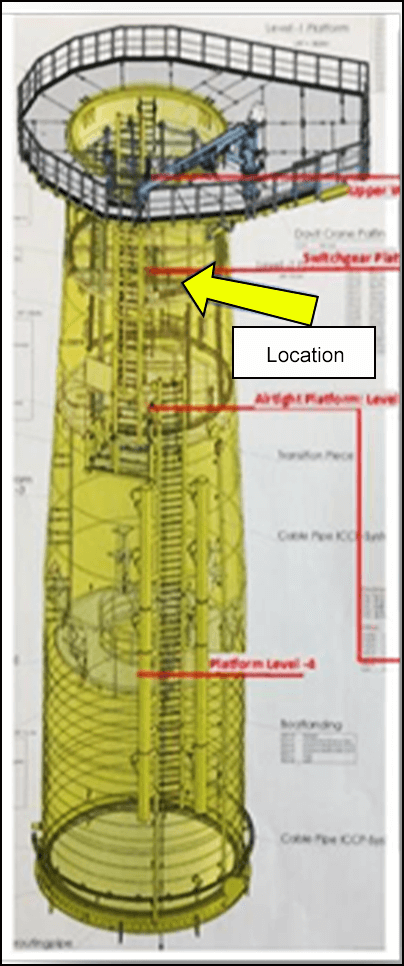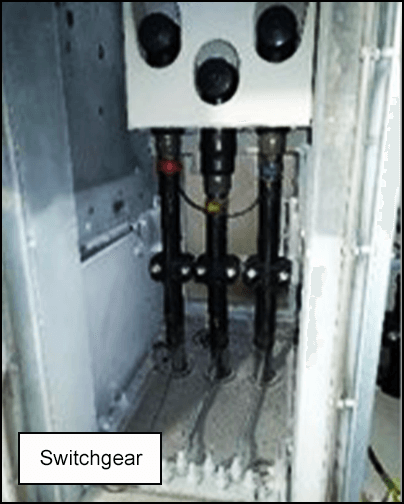-
What happened?
Three technicians were tasked to undertake the exchange of the main switchgear panel. Whilst carrying out this task a short circuit occurred.
The high electrical currents caused large amounts of heat energy to be released.
The emergency response plan was activated. One technician was in close proximity to the switchboard and was evacuated.
After being transferred to the offshore platform, the injured technician was airlifted to the local hospital. He was suffering from breathing difficulties caused by smoke inhalation. While successful, the emergency response took far too long.

-
Why did it happen?
The technicians did not follow safe working practices for working on high voltage systems. This could have happened due to several reasons:
- Wiring reference documentation and procedures were not available at the point of work.
- Lack of resources at the offshore platform control centre.
- Lack of onsite review and actual practice of the emergency response plan.
- Communication failures during the work
- Roles and responsibilities of each team member were not clear.
- Lack of resources to carry out the task (people, equipment etc.)

-
What did they learn?
Resources (documentation, materials etc.) should be available at the task location before any work begins.
If the documentation is not available, work should not begin until it is provided. If a document is discovered to be missing during the task, work should be stopped.
If for any reason the correct resources are not available or become reduced, schedules should be reviewed and updated to reflect the available resources.
Competencies and training should be checked for all people involved in high voltage work, including contractors.
Emergency response plans should be reviewed and practiced routinely.
Review high voltage and safety management system.

-
Ask yourself or your crew
How do you know if you have the correct training to carryout out high voltage works?
Are the correct switching procedures and schedules available – including at the point of work? If not, what should you do?
What emergency response procedures do we have in place, and how are they activated?
If you have to participate in a rescue, do you have sufficient knowledge and practice to do your part?

Add to homescreen
Content name
Select existing category:
Content name
New collection
Edit collection
What happened?
Three technicians were tasked to undertake the exchange of the main switchgear panel. Whilst carrying out this task a short circuit occurred.
The high electrical currents caused large amounts of heat energy to be released.
The emergency response plan was activated. One technician was in close proximity to the switchboard and was evacuated.
After being transferred to the offshore platform, the injured technician was airlifted to the local hospital. He was suffering from breathing difficulties caused by smoke inhalation. While successful, the emergency response took far too long.

Why did it happen?
The technicians did not follow safe working practices for working on high voltage systems. This could have happened due to several reasons:
- Wiring reference documentation and procedures were not available at the point of work.
- Lack of resources at the offshore platform control centre.
- Lack of onsite review and actual practice of the emergency response plan.
- Communication failures during the work
- Roles and responsibilities of each team member were not clear.
- Lack of resources to carry out the task (people, equipment etc.)

What did they learn?
Resources (documentation, materials etc.) should be available at the task location before any work begins.
If the documentation is not available, work should not begin until it is provided. If a document is discovered to be missing during the task, work should be stopped.
If for any reason the correct resources are not available or become reduced, schedules should be reviewed and updated to reflect the available resources.
Competencies and training should be checked for all people involved in high voltage work, including contractors.
Emergency response plans should be reviewed and practiced routinely.
Review high voltage and safety management system.
Ask yourself or your crew
How do you know if you have the correct training to carryout out high voltage works?
Are the correct switching procedures and schedules available – including at the point of work? If not, what should you do?
What emergency response procedures do we have in place, and how are they activated?
If you have to participate in a rescue, do you have sufficient knowledge and practice to do your part?
Three technicians were tasked to undertake the exchange of the main switchgear panel. Whilst carrying out this task a short circuit occurred. The injured technician was airlifted to the local hospital via helicopter, suffering from breathing difficulties caused by smoke inhalation.











